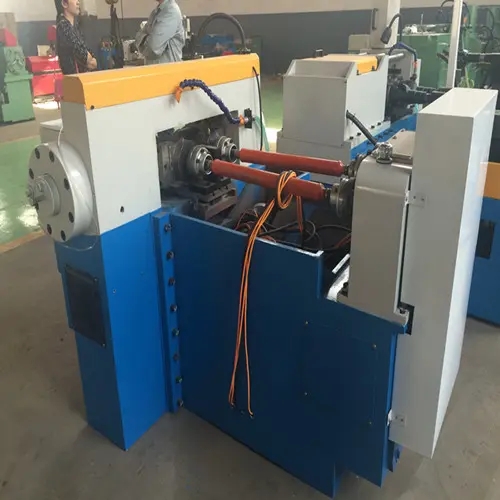
The Evolution and Importance of Metal Stud and Track Roll Forming Machines
In the realm of modern construction and architecture, the need for effective and efficient building materials has led to the popularization of metal stud and track systems. These systems are favored for their strength, durability, lightweight properties, and ease of installation. At the heart of producing these metal components is the metal stud and track roll forming machine, a crucial innovation in metal engineering.
Roll forming is a continuous bending operation in which a long strip of metal is gradually shaped into a desired cross-section. The process is particularly efficient for producing uniform profiles, making it ideal for creating metal studs and tracks used in framing systems. The metal stud and track roll forming machine specializes in transforming raw metal materials, usually steel or aluminum, into precisely shaped studs and tracks that are essential for drywall and other structural applications.
One of the primary advantages of the metal stud and track system is its lightweight nature compared to traditional wood framing. This characteristic not only reduces transportation costs but also simplifies the construction process. Builders can easily maneuver the lightweight materials on-site, which enhances overall efficiency. Metal studs are also non-combustible and resistant to mold and pests, offering a long-lasting alternative to wood framing, which can suffer from deterioration over time.

The roll forming machine operates through a series of rollers that shape the metal strip incrementally. The precision of these machines ensures that each stud and track produced meets stringent industry standards. Advanced models feature programmable controls that allow for quick changes in dimensions and specifications. This adaptability is particularly beneficial for manufacturers who cater to diverse construction needs and custom orders. As a result, the efficiency of the roll forming process, combined with the precision of the machines, leads to reduced waste and cost savings for manufacturers.
Another significant advantage of using a metal stud and track roll forming machine is the high production rate. These machines can operate at impressive speeds, producing large quantities of material in a relatively short time frame. This capability is crucial for meeting the demands of large construction projects, where time is often of the essence. Furthermore, the automation involved in the roll forming process minimizes manual labor, thereby reducing the potential for human error and improving overall safety on-site.
Environmental considerations also play a crucial role in the adoption of metal stud and track systems. Steel, a primary material used in metal studs, is one of the most recycled materials globally. Utilizing recycled steel in the roll forming process lowers energy consumption and reduces the carbon footprint associated with new metal production. This alignment with sustainable practices makes metal framing systems an increasingly popular choice among environmentally conscious builders and architects.
In conclusion, the metal stud and track roll forming machine is a vital piece of equipment in the modern construction industry. Its ability to produce high-quality, lightweight, and durable metal components has transformed building practices and enabled the pursuit of innovative architectural designs. With advantages such as speed, precision, and sustainable production methods, these machines are set to play a pivotal role in the future of construction, meeting the growing demand for effective building materials in a rapidly changing world. As technology continues to advance, we can anticipate even more efficiencies and capabilities from these indispensable machines.